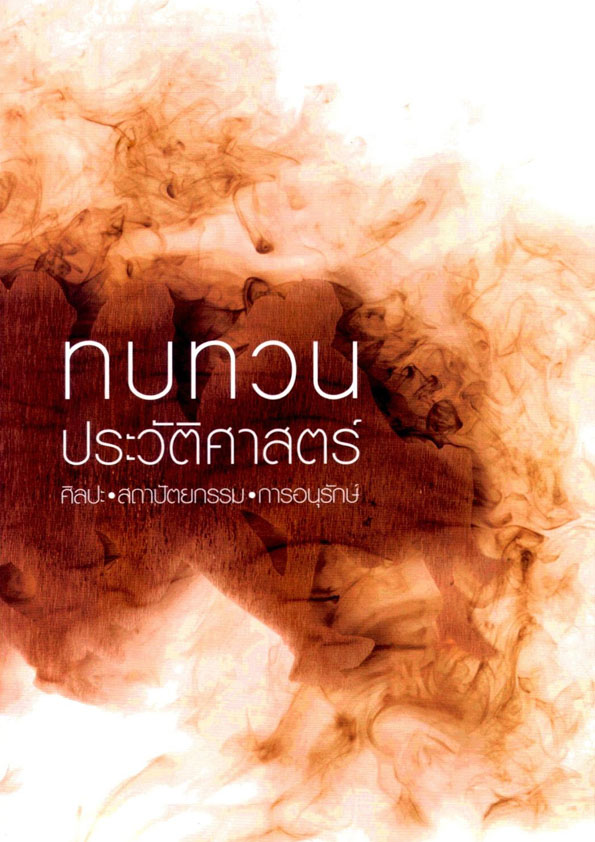การปรับตัวของการใช้ที่ว่างภายในเรือนพื้นถิ่นไท-ลาว Adaptability of Interior Space in Tai-Lao Vernacular House
Main Article Content
Abstract
บทคัดย่อ
กลุ่มชาติพันธุ์ไท-ลาว มีประวัติศาสตร์การตั้งถิ่นฐานในประเทศไทยมายาวนานกว่าสองศตวรรษ โดยยังสามารถคงตัวตนที่สืบทอดมาจากบรรพบุรุษและต้องการแสดงออกถึงเอกลักษณ์อันเป็นอัตลักษณ์ของกลุ่มชาติพันธุ์ของตน ดังเช่นการใส่เสื้อฮีของชาวลาวโซ่ง หรือผ้าย้อมครั่งของชาวลาวครั่ง ซึ่งสามารถสะท้อนย้อนถึงอัตลักษณ์เฉพาะกลุ่มได้เป็นอย่างดี ส่วนในแง่ของการอยู่อาศัยมีการรับเอารูปแบบเรือนไทยเข้ามาประยุกต์กับการอยู่อาศัยของตนเนื่องด้วยบริบทแวดล้อมวิถีชีวิต และวัฒนธรรมท้องถิ่นที่แปรเปลี่ยนไป
การปรับตัวของการใช้ที่ว่างภายในเรือนพื้นถิ่นลาวไท-ลาวในบทความนี้เป็นส่วนหนึ่งของงานวิจัย “การศึกษาแบบองค์รวมของการปรับตัวในบริบทใหญ่ที่แตกต่างของกลุ่มชาติพันธุ์ไท-ลาวในพื้นที่ลุ่มน้ำภาคกลางของประเทศไทย” ซึ่งเน้นศึกษาถึงอัตลักษณ์ของแต่ละกลุ่มชาติพันธุ์ไท-ลาว เพื่อช่วยเติมเต็มฐานความรู้ที่เกี่ยวข้องกับการปรับตัวเพื่อธำรงไว้ซึ่งอัตลักษณ์แห่งชาติพันธุ์ไท-ลาว ในบริบทของประเทศไทยเป็นสำคัญ โดยการเปรียบเทียบความเหมือน-ต่างของการใช้ที่ว่างภายในเรือนพื้นถิ่น และปัจจัยที่ส่งผลกระทบต่อการเปลี่ยนแปลงการใช้ที่ว่างภายในเรือนพื้นถิ่น โดยเปรียบเทียบกลุ่มชาติพันธุ์ไท-ลาวที่ตั้งถิ่นฐานในบริบทลุ่มน้ำภาคกลางของประเทศไทยกับกลุ่มที่ตั้งถิ่นฐานในบริบทเดิม ประกอบด้วยลาวพวนที่ตั้งถิ่นฐานเดิมในแขวงเชียงขวาง ลาวเวียงที่ตั้งถิ่นฐานเดิมในนครหลวงเวียงจันทน์ ลาวครั่งที่คาดว่าตั้งถิ่นฐานเดิมในแขวงหลวงพระบาง สาธารณรัฐประชาธิปไตยประชาชนลาว และลาวโซ่งหรือไทดำที่ตั้งถิ่นฐานเดิมในจังหวัดเดียนเบียนฟู ประเทศเวียดนาม
จากการค้นคว้าภาคเอกสาร การลงพื้นที่ภาคสนาม และการสัมภาษณ์เจ้าของเรือนกรณีศึกษาพบว่า ลักษณะทางกายภาพของเรือนพื้นถิ่นไท-ลาวทั้งในสาธารณรัฐประชาธิปไตยประชาชนลาว ประเทศเวียดนาม และประเทศไทยต่างก็มีพลวัต และแนวทางการปรับตัวที่แตกต่างกันออกไปตามบริบทแวดล้อม วิถีชีวิต คติความเชื่อและประเพณีที่แตกต่างกัน หากแต่ยังคงอัตลักษณ์ที่แสดงออกถึงความเชื่อที่เกี่ยวกับเรือน โดยสะท้อนออกมาอย่างชัดเจนในพิธีกรรมที่สัมพันธ์กับการใช้ที่ว่างภายในเรือน
Abstract
The Tai-Lao ethnic group has a long history of settlement in Thailand that has spanned over two centuries. The group has retained cultural identities inherited from their ancestors and desires to articulate such identities that reflect their particular origin through several expressions, for example, the traditional black costume of Lao Song called Suang Hee and the lac-dyed fabric of Lao Krang. In terms of housing the Tai-Lao ethnic group has adopted overall architectural configuration of the traditional Thai house and adapted them to conform to new contexts, ways of life and local culture.
The examination of the adaptability of interior space in the Tai-Lao vernacular house in this article is part of the research “Holistic Study for the Adaptability in the Different Context of Tai-Lao Ethnic in the Central Region Basin of Thailand” which seeks to fulfill knowledge base related to adaptation to maintain the identity of the Tai-Lao ethnic group in the context of Thailand. The comparative study aims to understand the identity of each Tai-Lao ethnic group through the utilization of the interior space of its local houses and factors affecting changes of the interior space by comparing that of Tai-Lao ethnic groups settling in the context of the central region basin of Thailand with Tai-Lao ethnic groups settling in the original contexts, include Lao-Phuan originally settling in Xieng Khouang, Lao-Vieng originally settling in Vientiane and Lao-Krang believed to originally settle in luang Prabang, the Laos PDR, and Lao Song or Tai Dam originally settling in Dien Bien Foo province, Vietnam.
Data from documents, Fieldwork and interviews with house owners suggested that the physical characteristics of Tal-Lao vernavular house in Laos, Vietnam and Thailand have dynamicity, patterns of adaptations differs due to varying contexts, lifestyles, beliefs and traditions. Regardless of changes, identities reflecting domestic beliefs are still clearly expressed through rituals associated with the utilization of space within the house.

